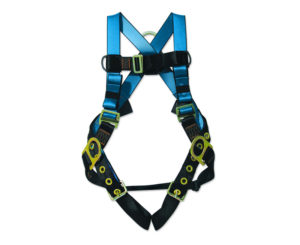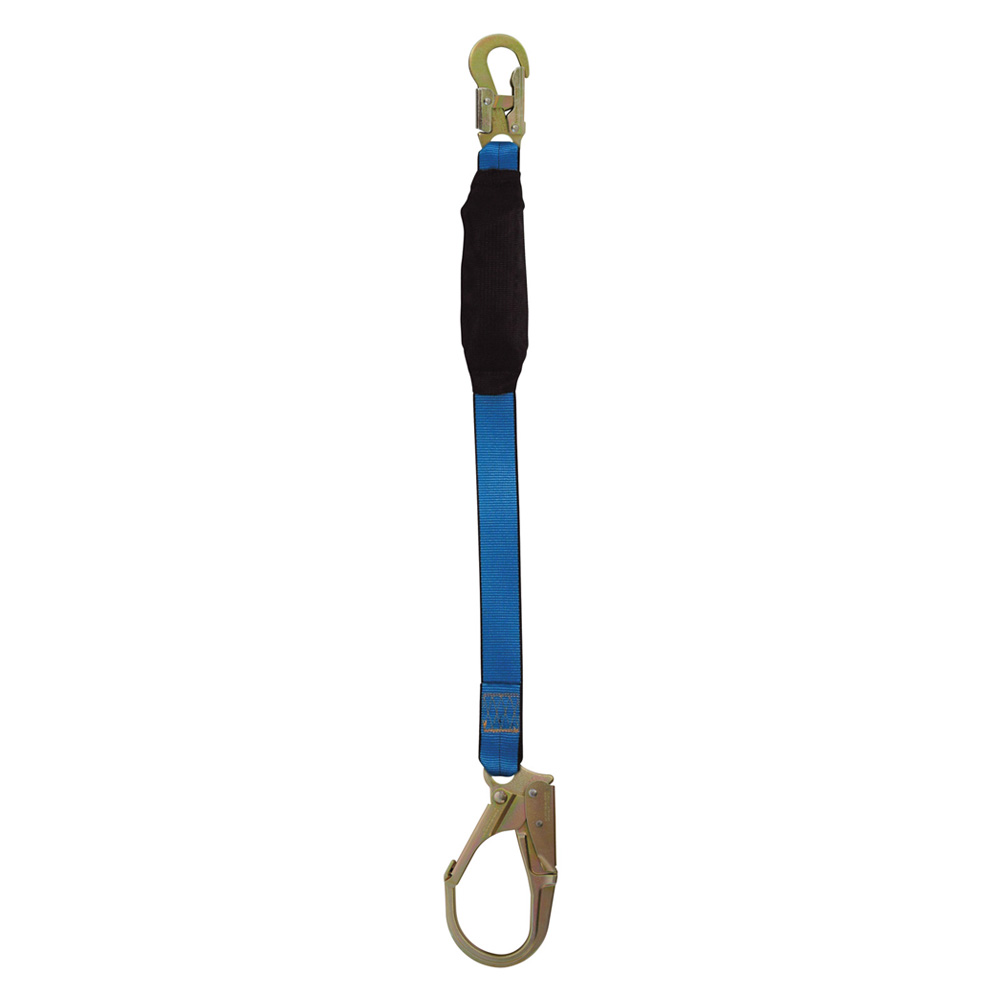
For many manufacturing and construction companies, figuring out when and where to use fall protection is critical both for employee safety and to safeguard against potential fines from regulatory bodies. There are two primary types of fall protection for on-the-job safety — active fall protection and passive fall protection.
Let’s discuss when you should use active fall protection, and how you can set up an atmosphere of safety and long-term sustainability by investing in the appropriate fall protection equipment for every job.
Active vs. Passive Fall Protection
Gearing up with the appropriate safety equipment is crucial towards promoting a happy, healthy workplace environment. But, to do that, you have to understand what safety equipment you need and when you need it. Fall protection equipment can come grouped into two categories: passive or active.
Passive fall protection is fall equipment that is at a stationary height and is not in movement. So, working on top of a building with guardrails would constitute passive fall protection. Typical passive fall protection equipment includes guardrails, safety gates and netting.
Active fall protection is used when passive fall protection cannot be utilized. So, this includes personal fall arrest systems and any other safety equipment that is not stationary. Active protection involves equipment like self-retracting lifelines, and safety harnesses and lanyards. One of the major differences between passive and active protection is that active protection requires both specialized, mobile equipment and contribution from the worker — as they will need to equip and handle the safety equipment.
Understanding Active Fall Protection Systems
Let’s look at some specifics in OSHA’s guidelines to determine when and where you should use each type of active fall protection.
We can break active fall protection equipment down into three categories — personal fall arrest systems, positioning device systems, and fall restraint systems.
Personal Fall Arrest Systems

Let’s go over a few OSHA requirements for personal fall arrest systems. All of these subsections are located within Subpart M of OSHA code, which is the safety equipment section.
- 29 CFR 1926.502(d)(16)(ii) – The maximum arrest on a falling worker has to be limited to 1,800 lbs.
- 29 CFR 926.502(d)(16)(iii) – This ensures that workers can fall no more than 6 feet and that they cannot contact the lower level in any way. So, if the lower level is 10 feet from the worker’s position, they cannot fall into contact with that lower-level if a fall were to happen.
- 29 CFR 1926.502(d)(16)(v) – The personal fall arrest system must be capable of withstanding at least 2x the potential impact of the worker connected to the system.
29 CFR 1926.502(d)(16)(iv) – The personal fall arrest system must both come to a full stop, and it must have a maximum deceleration distance of 3.5 feet.
These are the general rules-of-thumb when it comes to utilizing a personal fall arrest system. But, it’s important to remember that each specific component (e.g., safety harnesses and lanyards, anchorages, self-retracting lifelines, straps, etc.) all have their own requirements that must be fulfilled.
It’s critical that you choose a safety equipment provider that is fully OSHA compliant to prevent potential OSHA fines and issues.
Positioning Device Systems
Unlike personal fall arrest systems, positioning device systems are meant to protect workers from falls when they’re working on a vertical surface. So, if a worker is doing construction on a brick wall, a positioning device system will let them safely lean on that wall during the construction period. Positioning device systems are set up using body belts or safety harnesses and lanyards, an anchorage point, wires, and connectors (e.g., Snaphooks, Dee-rings, etc.).
Let’s go over some OSHA requirements for positioning device systems.
- 29 CFR 1926.502(e)(1) – The system must be set up so that workers can fall no more than 2 feet.
- 29 CFR 1926.502(e)(2) – The anchorage point must be able to handle at least twice the impact of the worker’s fall.
Fall Restraint Systems
The primary difference between fall restraint systems and personal fall arrest systems/positioning device systems is that fall restraint systems prevent a worker from falling any distance whatsoever. So, fall restraint systems can be similar to both personal fall arrest systems and positioning device systems (i.e., vertical or horizontal) but they don’t have any give.
OSHA doesn’t actually have any specific mention of fall restraint systems in their Subpart M section of the code. But, they are certainly recognized by OSHA as fall safety equipment. In fact, they have received plenty of letters to introduce them into the code, and they have also commented on some specifics.
For example, they have said that fall restraint system, like positioning device and personal fall arrest systems, must be able to withstand twice the worker impact (or 3,000 lbs).
Conclusion
Fall protection is undoubtedly important in the construction and manufacturing industries. It helps keep workers safe from harm, promotes a safety-first workspace, and helps keep your business away from financial and reputation-damaging fines. But, finding the correct safety equipment for the job requires a little know-how and the correct supplier.
Safety equipment like active fall protection helps keep workers safe on-the-job by providing mobile, dynamic fall safety that can be leveraged in a wide variety of circumstances. Remember, most of this safety equipment (i.e., personal fall arrest systems, positioning device systems, and fall restraint systems) require you to anchor the entire system onto a solid foundation. You will also have to assemble the equipment, which gives you additional mobility since you can construct the equipment when and where it’s needed.
Always make sure that your workers have an adequate amount of training to deal with these systems since, unlike passive fall safety systems, they will be actively utilizing them.
Are you looking for a full range of OSHA compliant active fall safety equipment? Check out our selection.





 29 CFR 1926.502(d)(16)(iv) – The personal fall arrest system must both come to a full stop, and it must have a maximum deceleration distance of 3.5 feet.
29 CFR 1926.502(d)(16)(iv) – The personal fall arrest system must both come to a full stop, and it must have a maximum deceleration distance of 3.5 feet.